|
|
|
BRAUN (Georg) & HOGENBERG (Frans).
[ANDALOUSIE] Conil - Xeres de la Frontera.
[Cologne, 1572]. 351 x 497 mm.
书商的参考编号 : LBW0621b
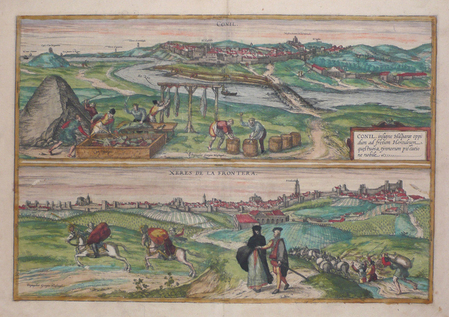
|
|
|
BRAUN (Georg) & HOGENBERG (Frans).
[ANVERS] Anverpia.
[Cologne, 1572]. 338 x 479 mm.
书商的参考编号 : LBW-3249
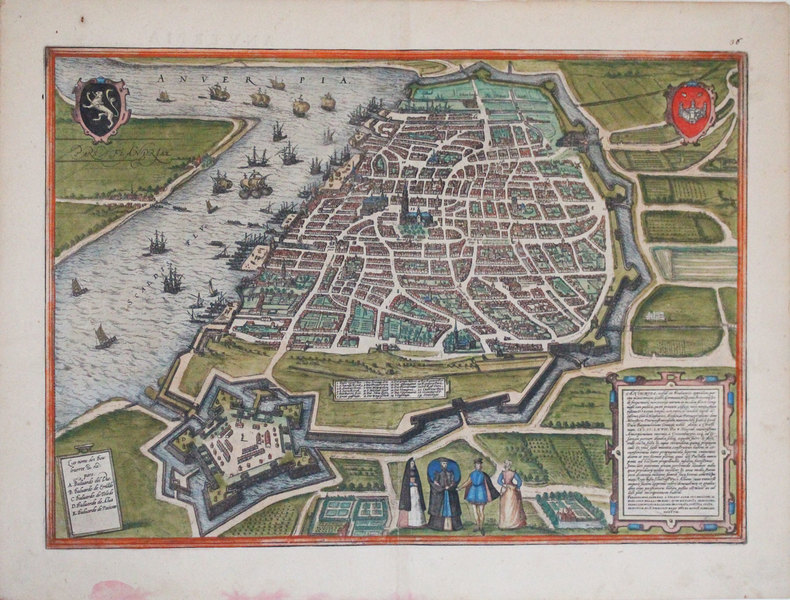
|
|
|
BRAUN (Georg) & HOGENBERG (Frans).
[BESANÇON] Vesontio Sequanorum Gallis Besanson Germanis Byzantz.
[Cologne, 1575]. 353 x 493 mm.
书商的参考编号 : LBW-7194
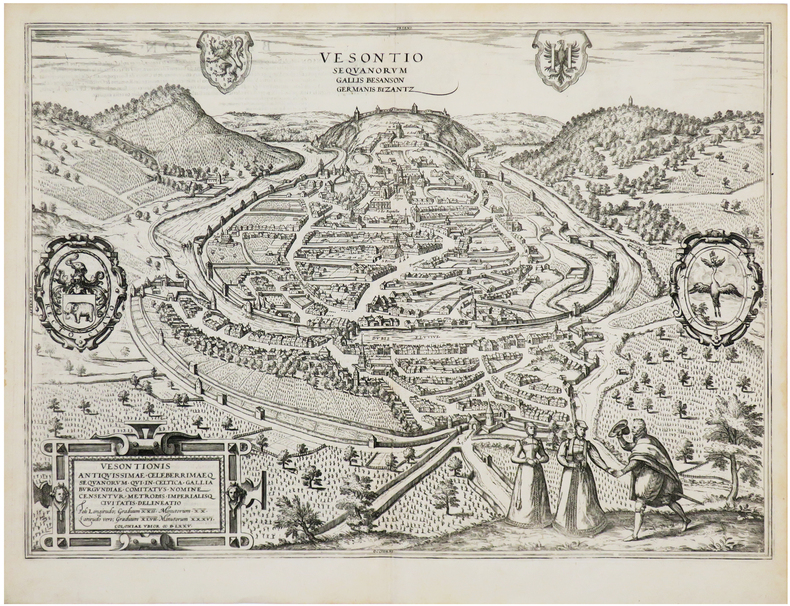
|
|
|
BRAUN (Georg) & HOGENBERG (Frans).
[BLOIS] Bloys.
[Cologne, 1575]. 308 x 438 mm.
书商的参考编号 : LBW-7902
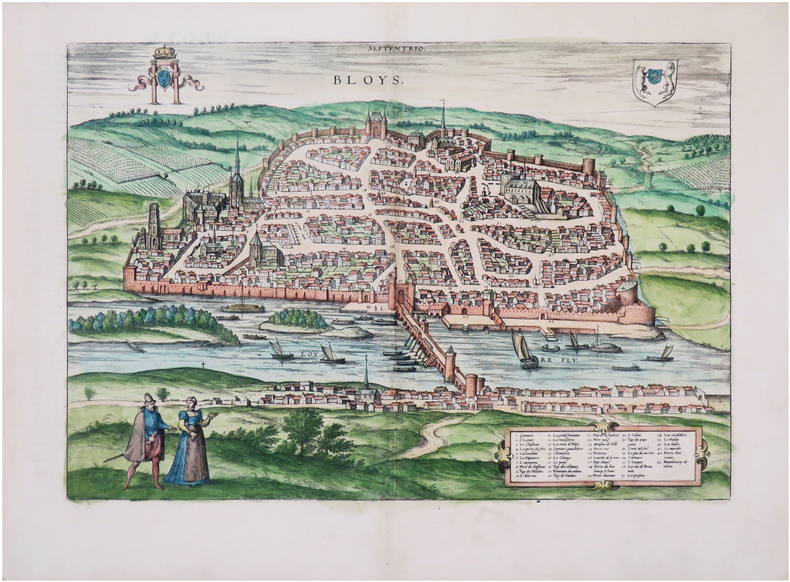
|
|
|
BRAUN (Georg) & HOGENBERG (Frans).
[BRUGES] Brugæ, Flandricarum urbium ornamenta.
[Cologne, 1572]. 310 x 453 mm.
书商的参考编号 : LBW-3254
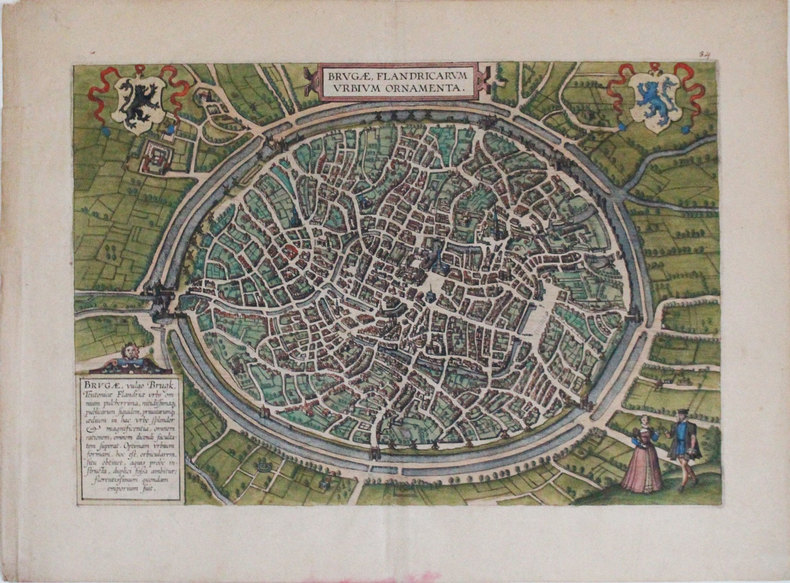
|
|
|
BRAUN (Georg) & HOGENBERG (Frans).
[CAMBRAI] Cambray.
[Cologne, 1588]. 355 x 495 mm.
书商的参考编号 : LBW-3234
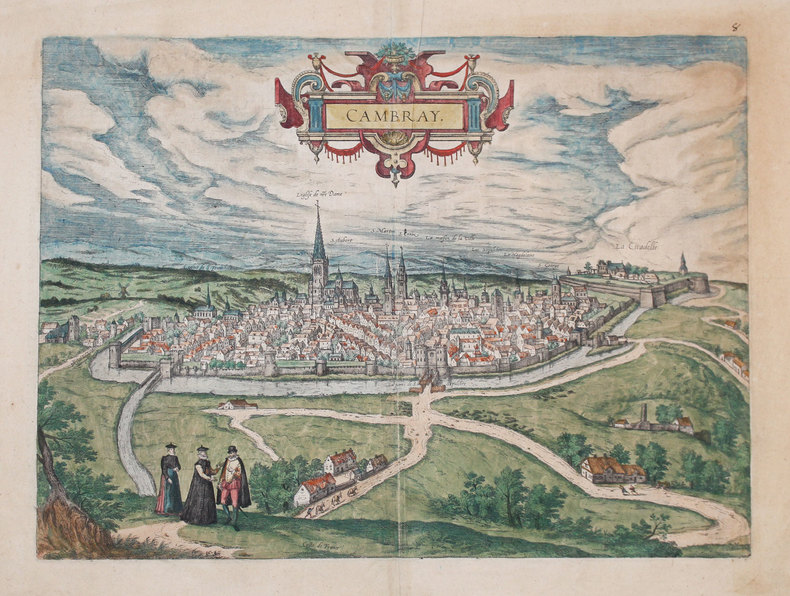
|
|
|
BRAUN (Georg) & HOGENBERG (Frans).
[CANTERBURY] Cantuarbury.
[Cologne, 1588]. 289 x 431 mm.
书商的参考编号 : LBW-3243

|
|
|
BRAUN (Georg);HOGENBERG (Frans);
[COSTUMES] Diversi Dithmarsorum et vicinarum gentium habitus.
Cologne 1598 362 x 495 mm.
书商的参考编号 : LBW0028b

|
|
|
BRAUN (Georg) & HOGENBERG (Frans).
[CROATIE/KOSTANJICA] Castanowiz Croatiæ propugnaculum.
[Cologne], 1617 [1618]. 325 x 449 mm.
书商的参考编号 : LBW-5913
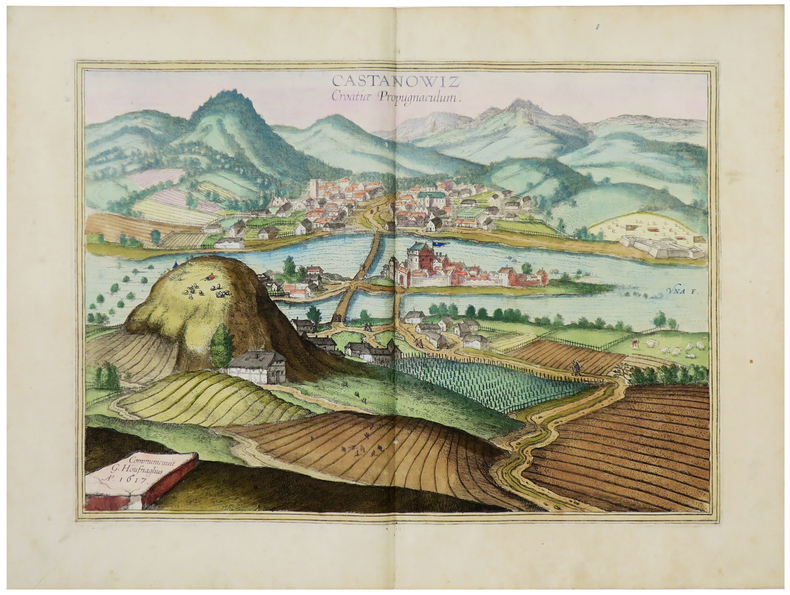
|
|
|
BRAUN (Georg) & HOGENBERG (Frans).
[CROATIE/PETRINJA] Petrina in ditione Turcarum - Petrina in ditione Christianorum.
[Cologne], 1617 [1618]. 364 x 504 mm.
书商的参考编号 : LBW-5882
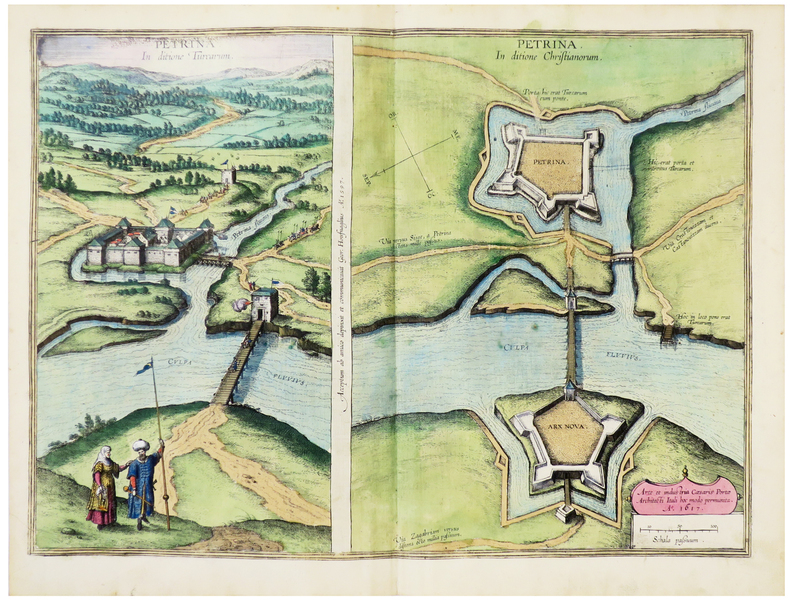
|
|
|
BRAUN (Georg) & HOGENBERG (Frans).
[EMDEN] Emuda, vulgo Embden urbs Frisiæ orientalis primaria.
[Cologne, 1588]. 347 x 486 mm.
书商的参考编号 : LBW-3306
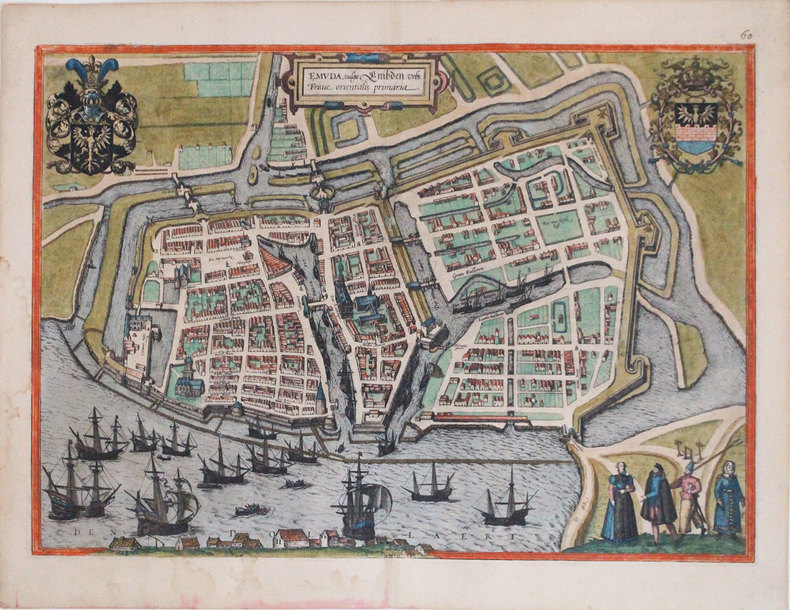
|
|
|
BRAUN (Georg) & HOGENBERG (Frans).
[GAND] Gandavum, amplissima Flandriæ urbs.
[Cologne, 1572]. 336 x 480 mm.
书商的参考编号 : LBW-3298

|
|
|
BRAUN (Georg) & HOGENBERG (Frans) & JANSSON (Johannes).
[IRLANDE] Galwaye - Dubline - Lymericke - Corcke.
[Amsterdam, 1657]. 306 x 438 mm.
书商的参考编号 : LBW-3186

|
|
|
BRAUN (Georg) & HOGENBERG (Frans).
[LYON] Lugdunum.
[Cologne, 1572]. 355 x 495 mm.
书商的参考编号 : LBW-3233
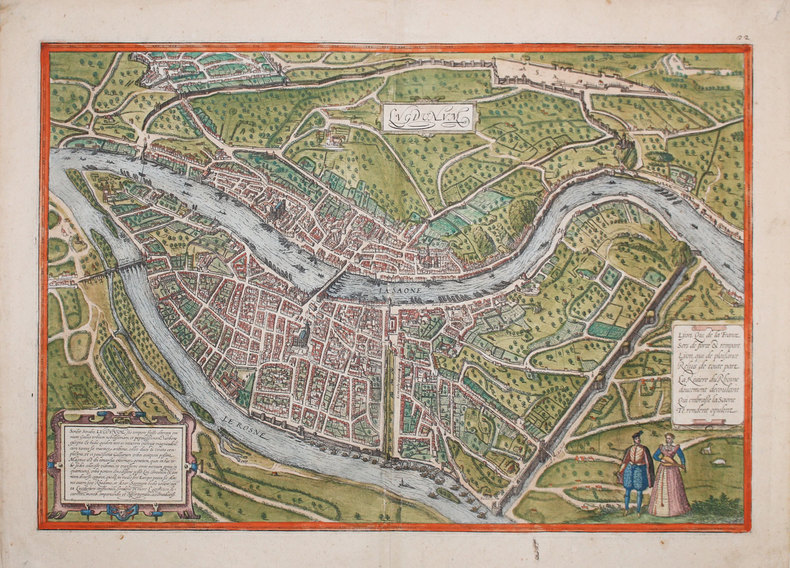
|
|
|
BRACONNIER (Alfred).
[MEURTHE-et-MOSELLE] Carte géologique et agronomique du département de Meurthe-et-Moselle.
1882. En 32 sections montées sur toile et repliées, formant une carte de 1,14 x 1,44 m.
书商的参考编号 : LBW-7953
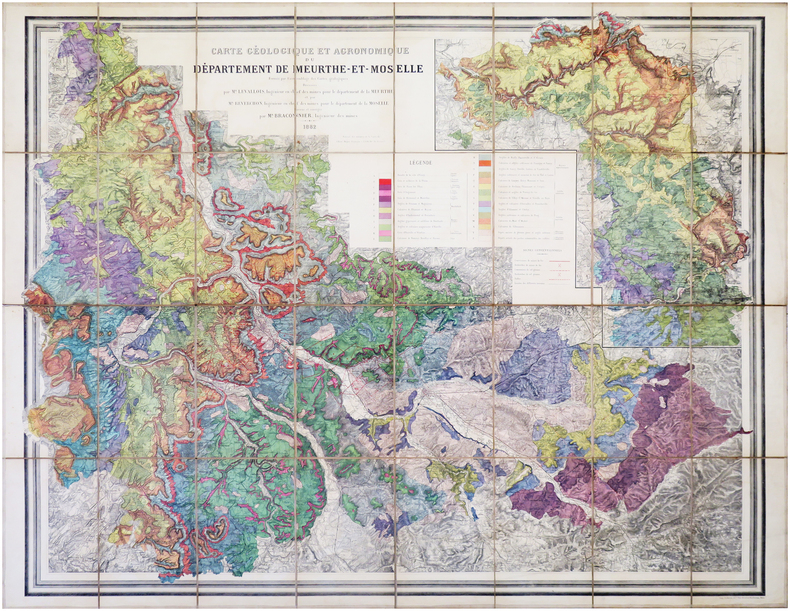
|
|
|
BRAUN (Georg) & HOGENBERG (Frans).
[OSTIE] Ostia.
[Cologne, 1588]. 294 x 496 mm.
书商的参考编号 : LBW-3307
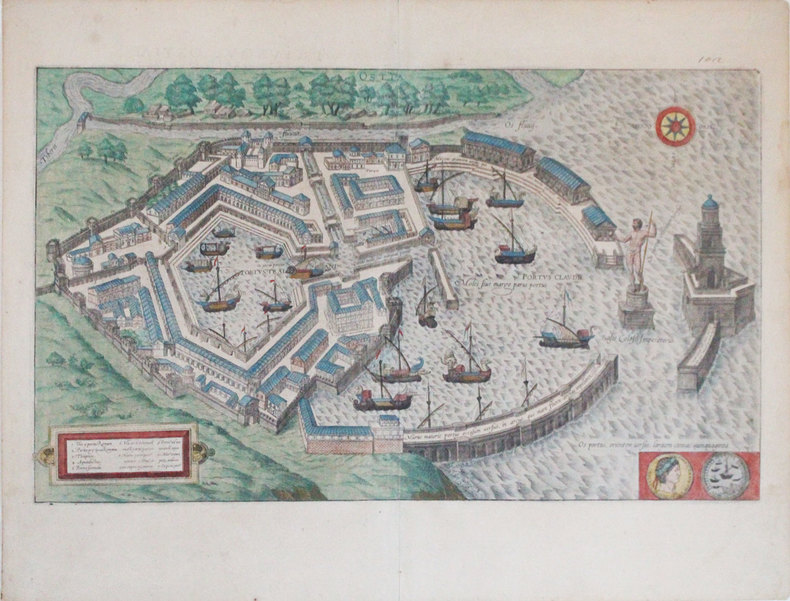
|
|
|
BRAUN (Georg) & HOGENBERG (Frans).
[PALERME] Palermo.
[Cologne, 1588]. 324 x 500 mm.
书商的参考编号 : LBW-3308
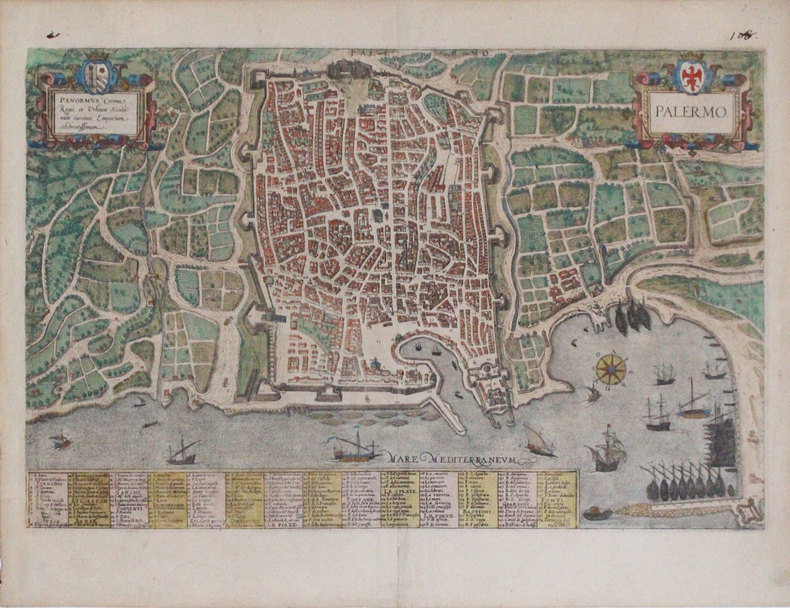
|
|
|
BRAUN (Georg) & HOGENBERG (Frans).
[PÉROUSE] Perusia gratum musis in Tuscia domicilium.
[Cologne, 1588]. 364 x 439 mm.
书商的参考编号 : LBW-3300
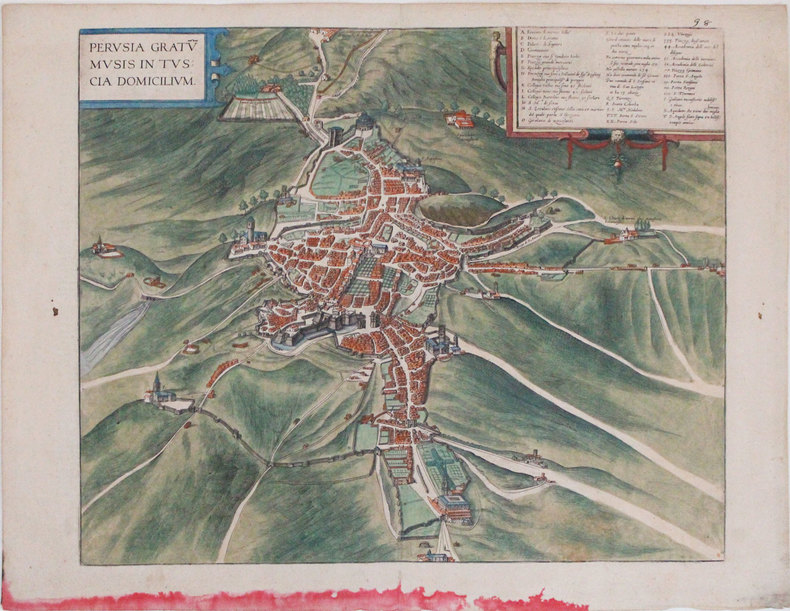
|
|
|
BRAUN (Georg) & HOGENBERG (Frans).
[SWIEBODZIN] Die Stat Swybuschin in nider Schlesien.
[Cologne, 1596-1597]. 341 x 461 mm.
书商的参考编号 : LBW-3151
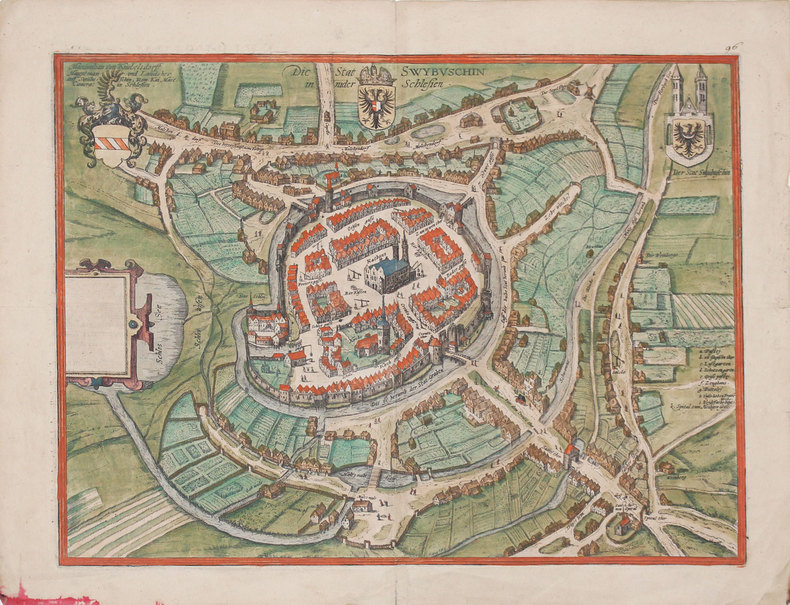
|
|
|
BRAIVE (Georges).
[VENDÉE/ÎLE d'YEU] Île d'Yeu.
Île d'Yeu, G. Penaud, "Nouvelles Galeries Insulaires", 1938. 237 x 349 mm.
书商的参考编号 : LBW-8221

|
|
|
Bravo Emile:
Aleksis Strogonov.
SilkScreen Art. Ex-libris (sérigraphie) au format 15,5 x 22 cm. A l'état de neuf.
书商的参考编号 : 8461

|
|
|
Brandao Adriana
Aujourd'hui le Bresil
Casterman 2014 144 pages 20 2x25 1x1 1cm. 2014. Relié. 144 pages.
书商的参考编号 : 500058969

|
|
|
Brandao Adriana
Aujourd'hui le Bresil
Casterman 2014 144 pages 20 2x25 1x1 1cm. 2014. Relié. 144 pages.
书商的参考编号 : 500078500
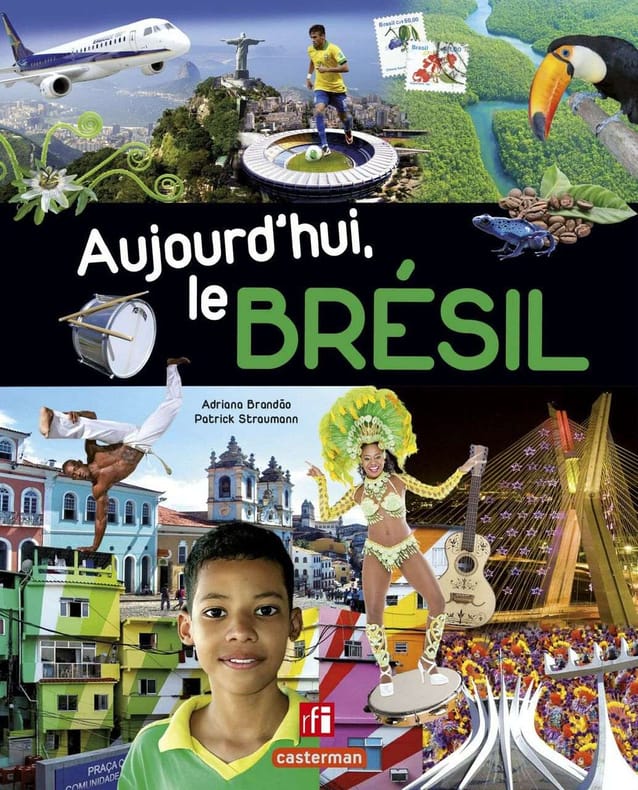
|
|
|
Brandao Adriana
Aujourd'hui le Bresil
Casterman 2014 144 pages 20 2x25 1x1 1cm. 2014. Relié. 144 pages.
书商的参考编号 : 500078508
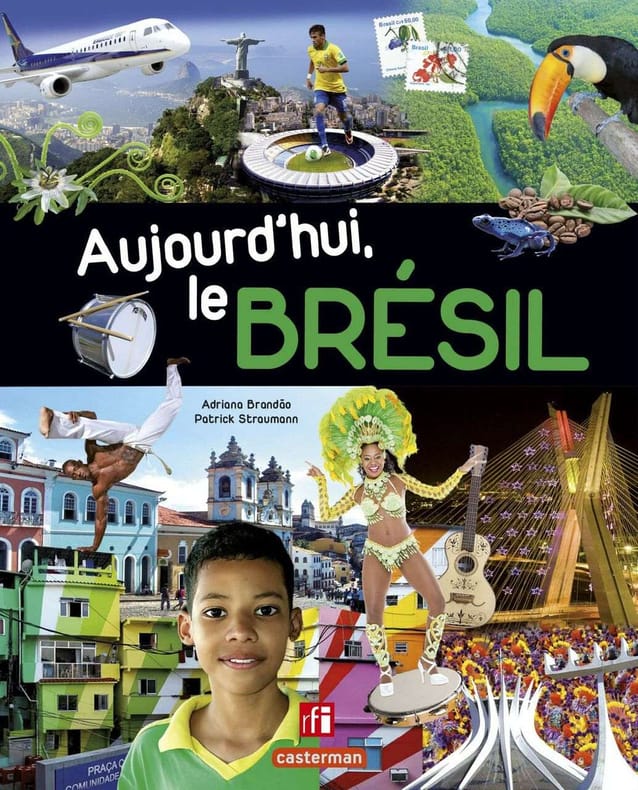
|
|
|
Brandao Adriana
Aujourd'hui le Bresil
Casterman 2014 144 pages 20 2x25 1x1 1cm. 2014. Relié. 144 pages.
书商的参考编号 : 500093062
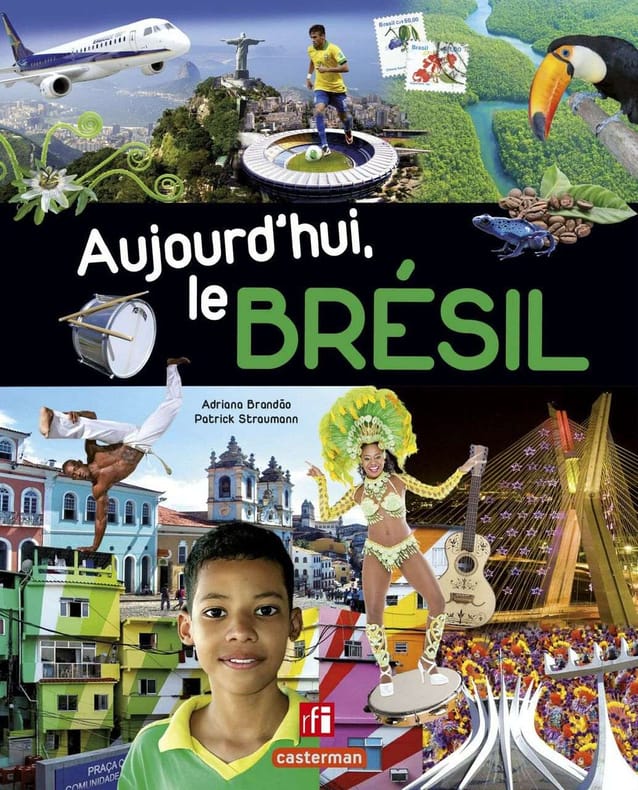
|
|
|
Brandao Adriana
Aujourd'hui le Bresil
Casterman 2014 144 pages 20 2x25 1x1 1cm. 2014. Relié. 144 pages.
书商的参考编号 : 500095025

|
|
|
Brandao Adriana
Aujourd'hui le Bresil
Casterman 2014 144 pages 20 2x25 1x1 1cm. 2014. Relié. 144 pages.
书商的参考编号 : 500121600

|
|
|
Brame-Tremblot Geneviève
Chez toi en Normandie
Hachette 1999 22 6x1x14 4cm. 1999. Broché.
书商的参考编号 : 500110242

|
|
|
BRAILLARD Etienne; TSCHAN André (préf.):
La typographie genevoise au quinzième siècle.
Genève, Etienne et Christian Braillard, 1978. In-4 de 76-[4] pages, cartonnage ivoire orné d'une grande vignette en noir au premier plat, titre au dos. Impression du texte en noir et rouge.
书商的参考编号 : 13009
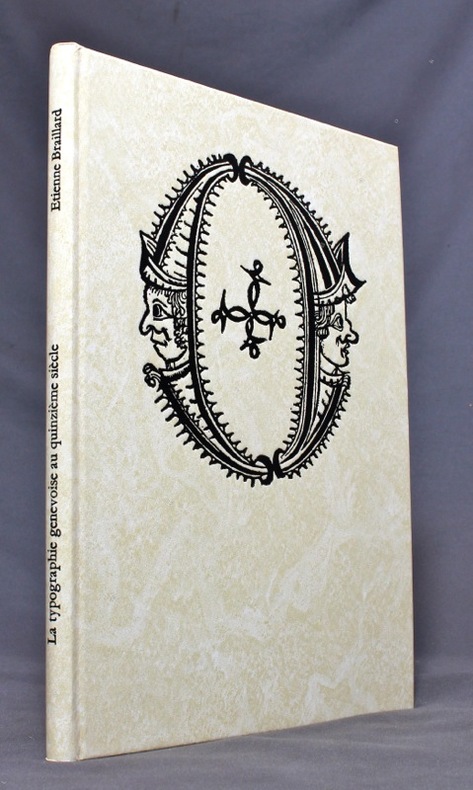
|
|
|
BRAUN (Georg) & HOGENBERG (Frans).
Lutetia, vulgari nomine Paris, urbis Galliæ maxima.
[Cologne, 1572]. 339 x 482 mm.
书商的参考编号 : LBW-8238

|
|
|
BRASSAI.
Photo-carte avec la signature autographe de Brassaï au verso (années 1970).
Carte postale (10,5 x 15 cm), années 70. Annonce du documentaire télévisé "Champ visuel Brassaï - 19 décembre 22 h - 2e chaîne couleur". Signé au dos par le photographe.
书商的参考编号 : 68129
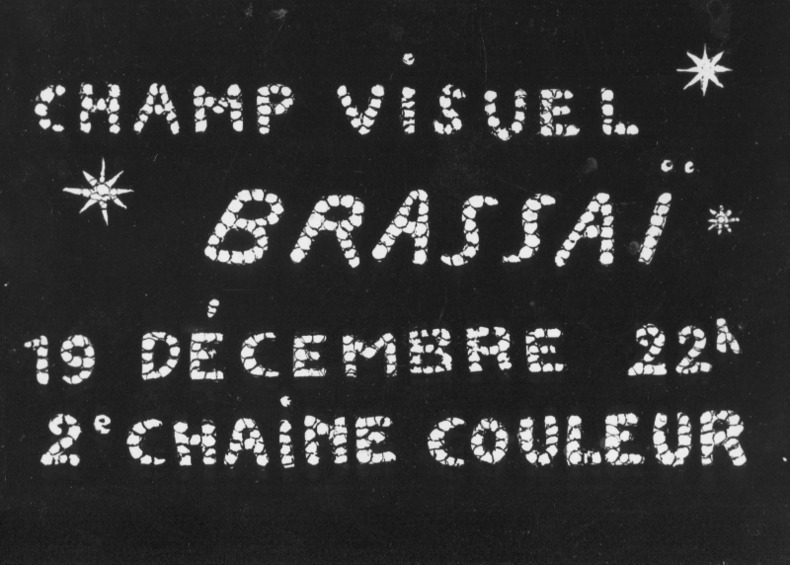
|
|
|
BRASSAI.
Photo-carte avec la signature autographe de Brassaï au verso (années 1970).
Carte postale (10,5 x 15 cm), années 70. Annonce du documentaire télévisé "Champ visuel Brassaï - 19 décembre 22 h - 2e chaîne couleur". Signé au dos par le photographe.
书商的参考编号 : 68129

|
|
|
Braun, Georg (1541-1622) et Hogenberg, Frans (1539?-1590?)
PLAN DE CHARTRES, tiré de l'Atlas : "Civitates orbis terrarum liber primus", Coloniae Agrippinae : [s.n.], 1573
1573 PLAN ANCIEN en couleurs, colorée d'époque à la main, en marron, bleu, vert et rouge. Format total : 40 centimètres de haut par 31 centimètres de large, réalisée par Braun, Georg et Hogenberg, Frans , tiré de l'ATLAS : "Civitates orbis terrarum liber primus", 1573 Coloniae Agrippinae : [s.n.] Editeur,
书商的参考编号 : 8976
|
|
|
Braby
Braby?s Directories Cover Southern Afrika (Road and Rail Map)
LTD, Brown Davis & Platt, o.J. Faltkarte, einseitig bedruckt mit farbiger Landkarte von Südafrika, Teilstücke von Afrika (Rhodesia, Zambia and Malawi), Statistik-Tabelle und Werbeanzeigen sowie Index, 100x70 cm groß, leichte Einrisse und Kantenbeschabungen, wenige Bleistifteinträge, gebräunt, insgesamt noch ordentlicher Zustand
书商的参考编号 : 262704ge

|
|
|
Bradley, John
Allied Intervention in Russia
251 pages. Index of names. Bibliography. Maps. "Almost 50 years after the event, the Alliled intervention in Russia following the Bolshevik seizure of power in 1917 remains a conroversial issue. For that reason, and because so much government documentary material has remained inaccessible, it has been badly neglected by professional historians... Provides a wealth of completely new material... The obscure beginnings of the intervention, November 1917 to August 1918, are thoroughly explained, and the role of Japan and Czechoslovakia Corps in the military strategy of the Allies is examined." - from dust jacket. Usual library markings. Above-average wear. Front hinge open. Reading copy only. Book

|
|
|
Bradshaw, Marian Hahn
Canadian Collector Magazine, May/June 1985, Volume 20, No. 3: The Lachine Rapids
100 pages. Features: The Lachine Rapids and their mark on history; Indian trade silver in the McCord Museum collection; Lords of the Lakes - the North West Company 1784-1821; Wintering Dishes - recalling the famed Beaver Club dinners (with recipes!); Trade and Empire - Fishermen began fur trade in New France; The Challenge of Heritage Conservation (in English and French); Several articles in French; Domestic Interiors - Parks Canada's designated houses in Quebec; Exhibit of five centuries of old and rare maps; The Liliane Stewart Collection; Counterfeit Canadiana I; Paperweights. Light wear. Quality copy. Book

|
|
|
BRAMBILLA Ambrogio attivo a Roma tra il 1579 ed il 1599
Nova Urbis Romae Descriptio Anni 1587
Rarissima pianta prospettica della città dal Gianicolo, incisa da Ambrogio Brambilla per il tipografo Girolamo Franzini. Si tratta di una piccola pianta, dipendente da quella che il Brambilla stesso incise per Claudio Duchetti nel 1582, aggiornata in parte alla riforma urbanistica di Sisto V. Sono raffigurati gli obelischi di S. Pietro, S. Giovanni e S. M. Maggiore e la via Nova. L’opera è di grandissima rarità; Hülsen (1915) descrive due esemplari nei cataloghi di inizio secolo delle librerie antiquarie romane Rappaport e Lang. Marigliani (2007) riproduce l’esemplare di una collezione privata romana, con una legenda è molto nutrita, addirittura stampata su una lastra separata; è composta da 136 rimandi, dei quali i primi 114 derivano dalla pianta del 1582.In alto, nel riquadro di sinistra, troviamo il titolo e le indicazioni editoriali: NOVA URBIS ROMAE DESCRIPTIO ANNI 1587. Per Ambrosiu s brambilla spictore[m] delineatu s et incisa m. Nel riquadro di destra si legge: Roma fu edifficata gl’anni del mondo 5550 e da poi la destruttione de Troia anni 753 da Romolo, e Remo, fratelli nati da Silvia figliola de Numitore Re de Albano: fu anticame[n]te il suo circuito de le mura miglia 32.Orientazione nei quattro lati al centro con il nome dei punti cardinali: SEPTENTRIO, MERIDIES, OCCIDENS, ORIENS, il nord è a sinistra. Acquaforte e bulino, stampata su carta vergata coeva, con ampi margini, in perfetto stato di conservazione.BibliografiaBifolco - Ronca, Cartografia e Topografia italiana del XVI secolo (2018), pp. 2406-2407, tav. 1238; Ganado (1994): II, n. 116 e III. n. 93; Hülsen (1915): XVIa, p. 63-64, n. 80; Marigliani (2007): n. 60. A very rare map of the city from the Janiculum Hill, engraved by Ambrogio Brambilla for the publisher Girolamo Franzini. It is a small map, based on the one that Brambilla himself engraved for Claudio Duchetti in 1582, partly updated to the urban reform of Sixtus V. The obelisks of S. Pietro, S. Giovanni and S. M. Maggiore and the via Nova are represented. The work is of great rarity; Hülsen (1915) describes two examples in the catalogs of the beginning of the century of the Roman antique bookshops Rappaport and Lang. Marigliani (2007) reproduces the exemple of a private Roman collection, with a very large legend, even printed on a separate plate; it is composed of 136 references, of which the first 114 derive from the map of 1582.Above, in the left box, we find the title and the printing details: NOVA URBIS ROMAE DESCRIPTIO ANNI 1587. For Ambrosiu s brambilla spictore[m] delineatu s et incisa m. Orientation in the four sides with the name of the cardinal points: SEPTENTRIO, MERIDIES, OCCIDENS, ORIENS, the north is on the left. Etching and engraving, printed on contempoary laid paper, with wide margins, in perfect condition.LiteratureBifolco - Ronca, Cartografia e Topografia italiana del XVI secolo (2018), pp. 2406-2407, tav. 1238; Ganado (1994): II, n. 116 e III. n. 93; Hülsen (1915): XVIa, p. 63-64, n. 80; Marigliani (2007): n. 60. Bifolco - Ronca, Cartografia e Topografia italiana del XVI secolo (2018), pp. 2406-2407, tav. 1238.

|
|
|
Branch, Melville C.
An Atlas of Rare City Maps: Comparative Urban Design, 1830-1842
This is a very good hardcover copy in a very good dust jacket. The jacket is a little toned and has a bit of light soil. Internally completely clean. Maps of 40 cities in Europe, Russia, America and Asia are presented in full-page color plates. All maps were drawn and published between 1830 - 42. 13" high X 15" wide, 102 pages. Large heavy book. Foreign shipping will be extra. This book will be securely wrapped and packed in a sturdy box and sent with tracking.
|
|
|
Brandlmayr, John; et al
Northwest Sportsman Magazine - Fishing, Hunting and Boating in B.C., May 1961 - Revised Fresh Water Fishing Spots and Maps of British Columbia
42 pages. Features: Revised Fresh Water Fishing Spots and Maps of British Columbia; Nice one-page illustrated ad for Gibbs fishing tackle; One-page illustrated ad for Hardy and Milward split cane fishing rods from England; Marine fir plywood ad; Clay Chips - article with photos of Mr. & Mrs. Bert Whelan, Ray Gray, Virgil Poppe, Rudy Wiley, Earl Caldwell, Don McKay, Paul Maylor, Larry French, C.H. Reinhard, and Verne Greensword; Yacht Bureau begins research and product testing program; Boats; Nice framable one-page ad inside back cover by the B.C. Department of Recreation and Conservation entitled "Good Fishing!"; Nice photo-illustrated Lucky Lager ad on back cover; Many additional nostalgic ads. Unmarked with moderate wear. A quality vintage copy. Book

|
|
|
Brasnett Hugh / with Photographs By the Author and Maps By Jenny Brasnett
Thomas Hardy : A Pictorial Guide A Travel Guide with Maps of Thomas Hardy's England Countryside Perhaps What Inspired Him to Write of English life
~ SCARCE TITLE ~: Lodge Copse Press 1990 1990. Paperback : soft cover edition in good or better condition some slight wear to edges as normal for age of book. Overall good copy of this title. Excellent read. A good book to enjoy and keep on hand. Or would make a great gift for the fan / reader in your life. Clean and Unmarked Text. Illus. by Fully Illustrated. Biography / Great Places to See and Explore. Travel Culture History. Lodge Copse Press 1990 paperback
书商的参考编号 : 5024231 ???????? : 0951560905 9780951560907

|
|
|
Brass, R.A.
White Rock (British Columbia) By the Sea: Town Map
24" x 18" map of White Rock, British Columbia. Undated but appears to be circa 1978. Includes directory and locations of local businesses. Light wear. Unmarked. A quality copy of this nice White Rock memento. Map

|
|
|
BRAUN & Franz HOGENBERG Georg
Antiqua Urbis Roma Imago Accuratissima
Grande pianta della città stampata su due fogli, ispirata alla celebre carta del Pirro Ligorio, tratta dal Civitates Orbis Terrarum. Questa straordinaria ricostruzione di Roma durante il regno di Augusto, arricchita da una cospicua legenda con 269 richiami, costituisce il lavorò più ambizioso contenuto nel Civitates Orbis Terrarum, del quale oltretutto è una delle sole tre mappe a doppio foglio. L’opera è inserita nel Civitates Orbis Terrarum, il primo atlante devoto esclusivamente alle piante e vedute delle principali città del mondo. Il primo volume delle Civitates Orbis Terrarum fu pubblicato a Colonia nel 1572. Il sesto e ultimo volume apparve nel 1617. Questo grande atlante di città – cartografia urbana - curato da Georg Braun e inciso in gran parte da Franz Hogenberg, conteneva 546 prospettive, vedute a volo d'uccello e vedute cartografiche di città di tutto il mondo. Franz Hogenberg realizzò le tavole dei primi quattro volumi e Simon van den Neuwel (Novellanus, attivo dal 1580) quelle dei volumi V e VI. Georg Braun (1541-1622), un ecclesiastico di Colonia, fu il principale redattore dell'opera e fu molto aiutato nel suo progetto dalla vicinanza e dal continuo interesse di Abraham Ortelius, il cui Theatrum Orbis Terrarum del 1570 fu, come raccolta sistematica e completa di mappe di stile uniforme, il primo vero atlante. Le Civitates, in effetti, erano destinate ad accompagnare il Theatrum, come indicato dalla somiglianza dei titoli e dai riferimenti contemporanei sulla natura complementare delle due opere. Tuttavia, le Civitates erano progettate per avere un approccio più popolare, senza dubbio perché la novità di una raccolta di piante e vedute di città rappresentava un'impresa commerciale più rischiosa di un atlante mondiale, per il quale c'erano stati diversi precedenti di successo. Franz Hogenberg (1535-1590) era figlio di un incisore di Monaco che si era stabilito a Malines. Incise la maggior parte delle tavole del Theatrum di Ortelius e la maggior parte di quelle delle Civitates, e potrebbe essere anche indicato come il responsabile dell'origine del progetto. Oltre un centinaio di artisti e cartografi diversi, il più importante dei quali fu l'artista di Anversa Georg Hoefnagel (1542-1600), fornirono i disegni per le tavole delle Civitates. Hoefnagel non solo contribuì alla maggior parte del materiale originale per le città spagnole e italiane, ma rielaborò e modificò anche quello di altri collaboratori. Dopo la morte di Hoefnagel, il figlio Jakob continuò il lavoro per le Civitates. Gli autori della raccolta si proponevano di raffigurare "non icones et typi urbium", cioè non immagini generiche e tipizzate, "sed urbes ipsae admirabili caelaturae artificio, spectantium oculis subiectae appareant": non intendeva alludere o idealizzare, ma rappresentare fedelmente sulla carta, riprodurre esattamente, e in tempo reale, ciò che l'occhio vede, come annunciato nella prefazione al primo volume delle Civitates Orbis Terrarum. Incisione in rame, bella coloritura coeva, leggeri restauri perfettamente eseguiti per il resto in buono stato di conservazione. A good example, with fine original colour, of the Braun & Hogenberg Plan of Rome, first published in the 1588 edition of the Civitates Orbis Terrarum.Braun & Hogenberg's view is based upon the work of Pirro Ligorio. However, the title banner and lower key embellishments are completely revised, the former lacking the strapwork used by Braun & Hogenberg and replaced with a tapestry style fringe, while the lower key is now embellished with images of two nobles.Rome is shown from the west in a bird's-eye view that was a major achievement in its day. It includes the most important buildings from antiquity, several aqueducts, the Aurelian Wall and large arterial streets. The three figures in Roman garb in the foreground underscore the aim of meticulous reconstruction.Mont Testaccio is shown on the far side of the Tiber in the lower right-hand edge of the picture, with the Pyramid of Cestius above it to the right. At the center of the illustration the Marcellus Theatre can be identified above the island in the Tiber, with the vast Circus Maximus, used for chariot races, just above it to the right. Above that is the Palatine represented with intricately detailed buildings, an indication of the confusion at the time about how the seat of imperial power actually looked.To the north the Coliseum flanks the Palatine. In the lower left-hand part of the picture field is the Campus Martius, with the stadium of Domitian at the center, site of the modern Piazza Navona. Slightly higher up is the Pantheon with its monumental dome, looking as it does today. On the lower left edge the two great imperial mausoleums are shown as they would have appeared during the Roman epoch. Above the mausoleum of Augustus and below, at the bend in the river, is that of Hadrian.In the lower left-hand corner, the Mons Vaticanus with the Circus built by Caligua and a Neronian palace are recognizable outside the city. The baths of Diocletan dominate the northeastern part of the city. The Castra Praetoria, the barracks of the Praetorian Guard, is shown below the city walls in the upper left-hand corner. The work is included in the Civitates Orbis Terrarum, the first atlas devoted exclusively to plans and views of the world's major cities. Printed in six volumes between 1572 and 1617 it was so successful and widespread that several editions translated into Latin, German and French were printed. The first volume of the Civitates Orbis Terrarum was published in Cologne in 1572. The sixth and the final volume appeared in 1617. This great city atlas, edited by Georg Braun and largely engraved by Franz Hogenberg, eventually contained 546 prospects, bird-eye views and map views of cities from all over the world. Fransz Hogenberg produced the plates for the first four books, and Simon van den Neuwel (Novellanus, active since 1580) those for volumes V and VI. Georg Braun (1541-1622), a cleric of Cologne, was the principal editor of the work, and was greatly assisted in his project by the close, and continued interest of Abraham Ortelius, whose Theatrum Orbis Terrarum of 1570 was, as a systematic and comprehensive collection of maps of uniform style, the first true atlas. The Civitates, indeed, was intended as a companion for the Theatrum, as indicated by the similarity in the titles and by contemporary references regarding the complementary nature of two works. Nevertheless, the Civitates was designs to be more popular in approach, no doubt because the novelty of a collection of city plans and views represented a more hazardous commercial undertaking than a world atlas, for which there had been a number of successful precedents. Franz Hogenberg (1535-1590) was the son of a Munich engraves who settled in Malines. He engraved most of the plates for Ortelius's Theatrum and the majority of those in the Civitates, and may have been responsible for originating the project. Over a hundred of different artists and cartographers, the most significant of w... Fauser, A. 11932; Huelsen (1915) n. 38; Caldana, Roma Antica, p. 84, n. I.17.

|
|
|
BRAUN & Franz HOGENBERG Georg
Roma
Sorprendente veduta a volo d'uccello di Roma con cartiglio decorativo con titolo, che mostra la città com'era nel 1550. Sono incluse varie strutture superstiti dell'antica Roma: le mura circostanti, il Pantheon, il Colosseo, l'Arco di Costantino e il Foro Romano. Nell'angolo sinistro in primo piano si possono vedere il Palazzo Papale e l'Obelisco dal circo di Caligola e Nerone. In basso due figure in primo piano e due ampie tabelle con la legenda."E' una copia ridotta della pianta del Camocio (o della precedente di Leon Pitor come sostiene Scaccia Scarafoni) nella quale la città è ritratta a volo d'uccello dal Gianicolo" (cfr. Marigliani p. 152). L’opera è inserita nel Civitates Orbis Terrarum, il primo atlante devoto esclusivamente alle piante e vedute delle principali città del mondo. Il primo volume delle Civitates Orbis Terrarum fu pubblicato a Colonia nel 1572. Il sesto e ultimo volume apparve nel 1617. Questo grande atlante di città – cartografia urbana - curato da Georg Braun e inciso in gran parte da Franz Hogenberg, conteneva 546 prospettive, vedute a volo d'uccello e vedute cartografiche di città di tutto il mondo. Franz Hogenberg realizzò le tavole dei primi quattro volumi e Simon van den Neuwel (Novellanus, attivo dal 1580) quelle dei volumi V e VI. Georg Braun (1541-1622), un ecclesiastico di Colonia, fu il principale redattore dell'opera e fu molto aiutato nel suo progetto dalla vicinanza e dal continuo interesse di Abraham Ortelius, il cui Theatrum Orbis Terrarum del 1570 fu, come raccolta sistematica e completa di mappe di stile uniforme, il primo vero atlante. Le Civitates, in effetti, erano destinate ad accompagnare il Theatrum, come indicato dalla somiglianza dei titoli e dai riferimenti contemporanei sulla natura complementare delle due opere. Tuttavia, le Civitates erano progettate per avere un approccio più popolare, senza dubbio perché la novità di una raccolta di piante e vedute di città rappresentava un'impresa commerciale più rischiosa di un atlante mondiale, per il quale c'erano stati diversi precedenti di successo. Franz Hogenberg (1535-1590) era figlio di un incisore di Monaco che si era stabilito a Malines. Incise la maggior parte delle tavole del Theatrum di Ortelius e la maggior parte di quelle delle Civitates, e potrebbe essere anche indicato come il responsabile dell'origine del progetto. Oltre un centinaio di artisti e cartografi diversi, il più importante dei quali fu l'artista di Anversa Georg Hoefnagel (1542-1600), fornirono i disegni per le tavole delle Civitates. Hoefnagel non solo contribuì alla maggior parte del materiale originale per le città spagnole e italiane, ma rielaborò e modificò anche quello di altri collaboratori. Dopo la morte di Hoefnagel, il figlio Jakob continuò il lavoro per le Civitates. Gli autori della raccolta si proponevano di raffigurare "non icones et typi urbium", cioè non immagini generiche e tipizzate, "sed urbes ipsae admirabili caelaturae artificio, spectantium oculis subiectae appareant": non intendeva alludere o idealizzare, ma rappresentare fedelmente sulla carta, riprodurre esattamente, e in tempo reale, ciò che l'occhio vede, come annunciato nella prefazione al primo volume delle Civitates Orbis Terrarum. Incisione in rame, finemente colorata a mano, lieve gora d'acqua nel margine inferiore destro, piega di carta centrale, per il resto in ottimo stato di conservazione.BibliografiaA. P. Frutaz, "Le piante di Roma", tav. 123; C. Marigliani, "Le Piante di Roma delle collezioni private", n. 52; M. Gori Sassoli (a cura di), "Roma Veduta" n. 12; Scaccia Scarafoni, "Le Piante di Roma", n. 156. Striking bird's-eye plan of Rome with decorative title cartouche, showing the city as it was c. 1550. Included are various surviving features of ancient Rome: the surrounding walls, the Pantheon, the Coliseum, the Arch of Constantine, and the Forum Romanum. In the left corner in the foreground can be seen the Papal Palace and the Obelisk from the circus of Caligula and Nero. With two figures in the foreground, and two extensive tables of explanations."E' una copia ridotta della pianta del Camocio (o della precedente di Leon Pitor come sostiene Scaccia Scarafoni) nella quale la città è ritratta a volo d'uccello dal Gianicolo" (cfr. Marigliani p. 152). The work is included in the Civitates Orbis Terrarum, the first atlas devoted exclusively to plans and views of the world's major cities. Printed in six volumes between 1572 and 1617 it was so successful and widespread that several editions translated into Latin, German and French were printed. The first volume of the Civitates Orbis Terrarum was published in Cologne in 1572. The sixth and the final volume appeared in 1617. This great city atlas, edited by Georg Braun and largely engraved by Franz Hogenberg, eventually contained 546 prospects, bird-eye views and map views of cities from all over the world. Fransz Hogenberg produced the plates for the first four books, and Simon van den Neuwel (Novellanus, active since 1580) those for volumes V and VI. Georg Braun (1541-1622), a cleric of Cologne, was the principal editor of the work, and was greatly assisted in his project by the close, and continued interest of Abraham Ortelius, whose Theatrum Orbis Terrarum of 1570 was, as a systematic and comprehensive collection of maps of uniform style, the first true atlas. The Civitates, indeed, was intended as a companion for the Theatrum, as indicated by the similarity in the titles and by contemporary references regarding the complementary nature of two works. Nevertheless, the Civitates was designs to be more popular in approach, no doubt because the novelty of a collection of city plans and views represented a more hazardous commercial undertaking than a world atlas, for which there had been a number of successful precedents. Franz Hogenberg (1535-1590) was the son of a Munich engraves who settled in Malines. He engraved most of the plates for Ortelius's Theatrum and the majority of those in the Civitates, and may have been responsible for originating the project. Over a hundred of different artists and cartographers, the most significant of whom was Antwerp artist Georg Hoefnagel (1542-1600), engraved the cooper-plates of the Civitates from drawings. He not only contributed most of the original material for the Spanish and Italian towns but also reworked and modified those of other contributors. After Hoefnagel's death his son Jakob continued the work for the Civitates. The author set out to depict "non icones et typi urbium," that is, not generic and typified images, "sed urbes ipsae admirabili caelaturae artificio, spectantium oculis subiectae appareant": not intended to allude or idealize but to represent faithfully on paper, to reproduce exactly, and in real time, what the eye sees, as announced in the preface to the first volume of Civitates Orbis Terrarum. Etching on copperplate with original hand colour, a light waterstain in the lower right corner, otherwise in good conditions.BibliografiaA. P. Frutaz, "Le piante di Roma", tav. 123; C. Marigliani, "Le Piante di Roma delle collezioni private", n. 52; M. Gori Sassoli (a cura di), "Roma Veduta" n. 12; Scaccia Scarafoni, "Le Piante di Roma", n. 156.

|
|
|
BRAUN & Franz HOGENBERG Georg
Urbis Romae Situs Cum Iis Quae Adhuc Conspiciuntur Veter Monumet Reliquiis Pyrrho Ligorio...
Pianta archeologica di Roma, a proiezione verticale obliqua, orientata con il nord in alto.La pianta deriva da quella che Pirro Ligorio disegna per l'editore Michele Tramezzino nel 1552. Si tratta della prima derivazione stampata all'estero ed è ridotta leggermente nelle dimensioni. Erroneamente viene indicata come data d'esecuzioni il 1570, invece del 1552. Appare per la prima volta nel 1575, inserita nel Civitates Orbis Terrarum, il primo atlante devoto esclusivamente alle piante e vedute delle principali città del mondo. L’opera è inserita nel Civitates Orbis Terrarum, il primo atlante devoto esclusivamente alle piante e vedute delle principali città del mondo. Il primo volume delle Civitates Orbis Terrarum fu pubblicato a Colonia nel 1572. Il sesto e ultimo volume apparve nel 1617. Questo grande atlante di città – cartografia urbana - curato da Georg Braun e inciso in gran parte da Franz Hogenberg, conteneva 546 prospettive, vedute a volo d'uccello e vedute cartografiche di città di tutto il mondo. Franz Hogenberg realizzò le tavole dei primi quattro volumi e Simon van den Neuwel (Novellanus, attivo dal 1580) quelle dei volumi V e VI. Georg Braun (1541-1622), un ecclesiastico di Colonia, fu il principale redattore dell'opera e fu molto aiutato nel suo progetto dalla vicinanza e dal continuo interesse di Abraham Ortelius, il cui Theatrum Orbis Terrarum del 1570 fu, come raccolta sistematica e completa di mappe di stile uniforme, il primo vero atlante. Le Civitates, in effetti, erano destinate ad accompagnare il Theatrum, come indicato dalla somiglianza dei titoli e dai riferimenti contemporanei sulla natura complementare delle due opere. Tuttavia, le Civitates erano progettate per avere un approccio più popolare, senza dubbio perché la novità di una raccolta di piante e vedute di città rappresentava un'impresa commerciale più rischiosa di un atlante mondiale, per il quale c'erano stati diversi precedenti di successo. Franz Hogenberg (1535-1590) era figlio di un incisore di Monaco che si era stabilito a Malines. Incise la maggior parte delle tavole del Theatrum di Ortelius e la maggior parte di quelle delle Civitates, e potrebbe essere anche indicato come il responsabile dell'origine del progetto. Oltre un centinaio di artisti e cartografi diversi, il più importante dei quali fu l'artista di Anversa Georg Hoefnagel (1542-1600), fornirono i disegni per le tavole delle Civitates. Hoefnagel non solo contribuì alla maggior parte del materiale originale per le città spagnole e italiane, ma rielaborò e modificò anche quello di altri collaboratori. Dopo la morte di Hoefnagel, il figlio Jakob continuò il lavoro per le Civitates. Gli autori della raccolta si proponevano di raffigurare "non icones et typi urbium", cioè non immagini generiche e tipizzate, "sed urbes ipsae admirabili caelaturae artificio, spectantium oculis subiectae appareant": non intendeva alludere o idealizzare, ma rappresentare fedelmente sulla carta, riprodurre esattamente, e in tempo reale, ciò che l'occhio vede, come annunciato nella prefazione al primo volume delle Civitates Orbis Terrarum. Incisione in rame, finemente colorata a mano, in ottimo stato di conservazione. Archeological map of Rome published in the Civitates Orbis Terrarum of 1575.The map is a close copy of the Pirro Ligorio map of Rome (1552, published by Michele Tramezzino) reduced in size. Latin text edition. The work is included in the Civitates Orbis Terrarum, the first atlas devoted exclusively to plans and views of the world's major cities. Printed in six volumes between 1572 and 1617 it was so successful and widespread that several editions translated into Latin, German and French were printed. The first volume of the Civitates Orbis Terrarum was published in Cologne in 1572. The sixth and the final volume appeared in 1617. This great city atlas, edited by Georg Braun and largely engraved by Franz Hogenberg, eventually contained 546 prospects, bird-eye views and map views of cities from all over the world. Fransz Hogenberg produced the plates for the first four books, and Simon van den Neuwel (Novellanus, active since 1580) those for volumes V and VI. Georg Braun (1541-1622), a cleric of Cologne, was the principal editor of the work, and was greatly assisted in his project by the close, and continued interest of Abraham Ortelius, whose Theatrum Orbis Terrarum of 1570 was, as a systematic and comprehensive collection of maps of uniform style, the first true atlas. The Civitates, indeed, was intended as a companion for the Theatrum, as indicated by the similarity in the titles and by contemporary references regarding the complementary nature of two works. Nevertheless, the Civitates was designs to be more popular in approach, no doubt because the novelty of a collection of city plans and views represented a more hazardous commercial undertaking than a world atlas, for which there had been a number of successful precedents. Franz Hogenberg (1535-1590) was the son of a Munich engraves who settled in Malines. He engraved most of the plates for Ortelius's Theatrum and the majority of those in the Civitates, and may have been responsible for originating the project. Over a hundred of different artists and cartographers, the most significant of whom was Antwerp artist Georg Hoefnagel (1542-1600), engraved the cooper-plates of the Civitates from drawings. He not only contributed most of the original material for the Spanish and Italian towns but also reworked and modified those of other contributors. After Hoefnagel's death his son Jakob continued the work for the Civitates. The author set out to depict "non icones et typi urbium," that is, not generic and typified images, "sed urbes ipsae admirabili caelaturae artificio, spectantium oculis subiectae appareant": not intended to allude or idealize but to represent faithfully on paper, to reproduce exactly, and in real time, what the eye sees, as announced in the preface to the first volume of Civitates Orbis Terrarum. Copperplate with fine later hand colour, good condition. Scaccia Scarafoni p. 29, n. 22.

|
|
|
Braun, [Georg] und [Frans] Hogenberg
Civitas Francofordiana ad M. Altkolorierter Kupferstich.
um 1580. unter Passepartout; Bildausschnitt: 33x47,6 cm; Außenmaß: 47,4x60,6 cm; Mittelfalz, an den Seitenrändern des Blattes zwei ca 1x1,5 cm große gebräunte Stellen (nicht störend), verso lateinischer Text. Ansicht von Frankfurt am Main aus dem ersten Band der sechsbändigen "Civitates orbis terrarum" von Georg Braun und Frans Hogenberg (1572). Blick von Südwesten. Das Straßennetz ist stark vereinfacht, in der Altstadt fälschlich rechtwinklig, die Neustadt flächenmäßig zu klein wiedergegeben. Vorne links drei Figurinen in Landestracht.
书商的参考编号 : GRAP0192

|
|
|
Braun, Georg / Hogenberg, Franz
Beschreibung und Contrafactur der vornembster Stät der Welt.
(Berlin, Coron bei Kindler, 2004). 56 Blatt, 56 Farbtafeln, 15 TextS. (= Coron Exclusiv). Folio. 42,5 cm. Rotbraunes Ganzleder auf 6 imit. Bünden mit reicher Vergoldung und Ganzgoldschnitt.
书商的参考编号 : 91916

|
|
|
BREIDWISER (Théodore).
[CHASSE au RHINOCÉROS] Chasse aux rhinocéros.
Germany, [circa 1900]. 319 x 416 mm.
书商的参考编号 : LBW-5968
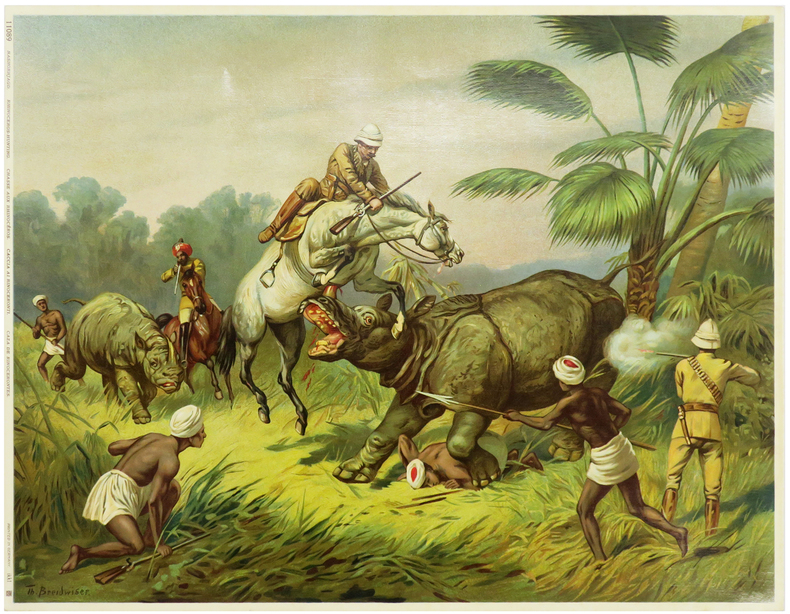
|
|
|
BREST. MANUSCRIT.
[Plan de la ville et du château de Brest].
[circa 1700]. 490 x 640 mm.
书商的参考编号 : LBW-4186
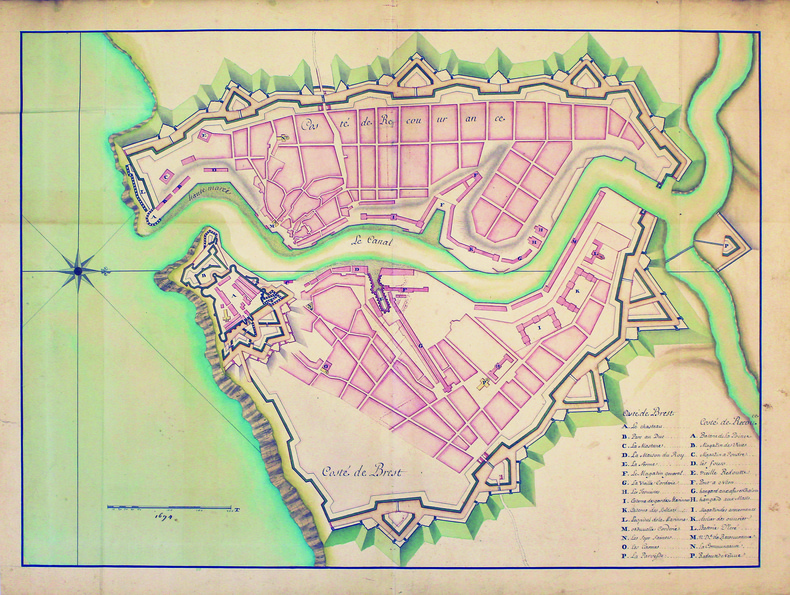
|
|
|
BRESSLER (Henri) & TROPÉ (Henri).
Emplacement des troupes de l'Armée Française, d'après les documents officiels.
Ducourtioux & Huillard, [circa 1895]. Lithographie en couleurs de 507 x 635 mm.
书商的参考编号 : LBW-7254
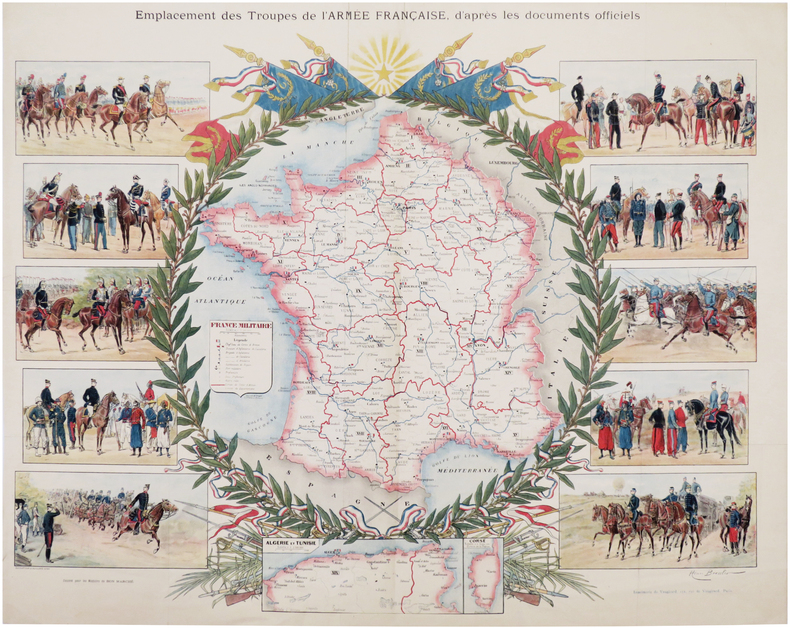
|
|
|
BRETON André - BRAUNER V. - ERNST Max - CHAR R. - DUCHAMP Marcel
LE JEU DE MARSEILLE. - Jeu De Cartes Surréaliste. TAROT des SURREALISTES.
Grimaud - André Dimanche Marseille S.D. (1983) Jeu de 54 cartes ( 90 X 60 mm ) sous coffret illustré en couleurs. Jeu en couleurs édité à Marseille par André Dimanche et fabriqué selon un procédé artisanal par le Maitre-Cartier Grimaud en 1983. créé sur le modèle du tarot de Marseille par les surréalistes présents à la Villa Air-Bel en 1940. Les seize cartes de figures ( indépendamment du joker Ubu, par Jarry ) ont été dessinées, par Arthur Adamov - Victor Brauner - René Char - René Daumal - Robert Delanglade - Oscar Dominguez - Marcel Duchamp - Max Ernst - Jacques Hérold - Sylvain Itkine - Wifredo Lam - André Masson - Benjamin Peret - Tristan Tzara. Les lames d'honneurs représentent Alice, Lautréamont, Freud, Baudelaire, la religieuse Portugaise, Paracelse, Novalis, Pancho Villa, etc. Très bel exemplaire à l'état de neuf bien complet de la petite notice dépliante.
书商的参考编号 : 462190
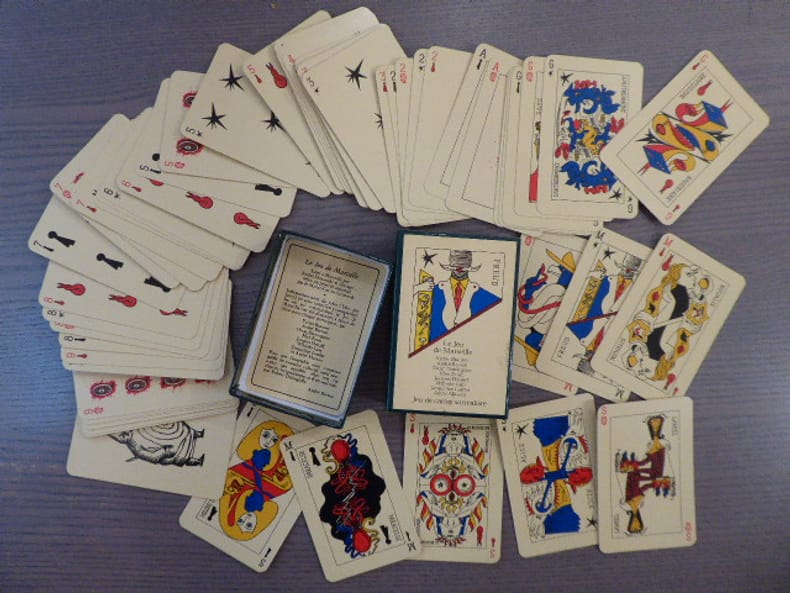
|
|
|